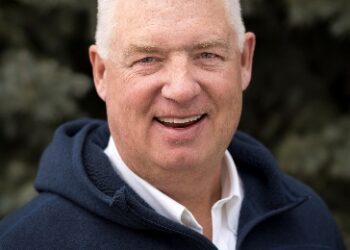By Jessianne Castle ENVIRONMENTAL AND OUTDOORS EDITOR
LIVINGSTON – According to statistics released by the vehicle insurance company State Farm, in 2018, Montana ranked second in the nation for a driver’s chance of experiencing a vehicle collision with a deer, with 14,098 claims filed by Montana drivers.
“We all see roadkill and most of us want to do something about it, but we just don’t know how to help,” wrote Laramie Maxwell in an email to EBS. Maxwell is the co-coordinator for the advocacy group Montanans for Safe Wildlife Passage and was among a team that convened at the first-ever Montana Wildlife and Transportation Summit in December of 2018.
In June, the summit partners released a 60-page report that includes a summary of the event as well as efforts the collaborating agencies and organizations have agreed to in moving forward. The summit, which was held at Carroll College in Helena, saw participation from more than 160 individuals, and was organized by Montanans for Safe Wildlife Passage, the Governor’s office, Montana Department of Transportation, Montana Fish, Wildlife and Parks and the Western Transportation Institute at Montana State University.
According to Nick Clarke, also of Montanans for Safe Wildlife Passage and a project coordinator for conservation organization Yellowstone to Yukon, the summit has prompted greater collaboration among agencies and nonprofits, helping to form new relationships, new collaborations and a new understanding among those involved.
“This strong foundation has opened up additional possibilities and created momentum for collectively addressing wildlife and transportation issues in Montana,” he wrote in an email to EBS.
The recent report outlines several measures aimed to reduce wildlife-vehicle collisions. To start, FWP, MDT and Montanans for Safe Wildlife Passage are organizing a steering committee that will provide guidance in developing a wildlife and transportation plan that identifies connectivity and safety priorities, encourages information sharing, outlines education and outreach initiatives and discusses funding opportunities.
“The intent of the work plan is that it is informed by local-level efforts. Community interest and support are integral to planning highways for people and wildlife,” wrote FWP Communication and Education Chief-of-Staff Greg Lemon in an email to EBS.
“There are a variety of wildlife accommodations that can help wildlife safely cross the highway, including signs, fencing and crossing structures,” he added. “For example, variable message signs activated seasonally can alert drivers when wildlife are moving. These seasonally-placed signs seem to be more effective than permanent signs.”
One key challenge the plan will address is related to information gaps across agencies and research groups. While FWP and MDT have a history of collaboration, the summit organizers believe additional partnerships are a valuable part of developing solutions.
“Information can be better shared among stakeholders so that decision-makers have the best information available at their disposal,” Clarke said. “Additionally, there is a need to support new and ongoing research to better understand how wildlife populations are moving across the landscape, and where their movements intersect with highways, so that we can make roads safer for everyone.”
Currently, FWP deploys GPS transmitters on a variety of species to track movements and habitat use. Not only does this data provide a glimpse into a specific animal’s movement pathways and ranges, but it can also be extrapolated to other populations and areas.
“In any given year, FWP maintains and collects data from hundreds of GPS-marked animals around the state,” Lemon said. “This information can help with highway planning and other conservation efforts.”
Maxwell said one important aspect to keep in mind is that distinct areas of the state are of greater concern for different reasons.
“One area may not have as many crashes, but because a certain resident species—think bighorn sheep—is relatively small, each crash may have the potential to affect the population’s ability to survive, while another area may be of concern because the high crash rate is dangerous for people,” he said.
Once migratory corridors are identified that overlap with significant traffic areas or proposed development, transportation officials are often tasked with some form of mitigation.
A 2014 survey conducted by the Western Transportation Institute found that transportation officials nationwide credit funding as the greatest barrier to developing wildlife crossing structures. In Montana, this is also coupled with what MDT Director Mike Tooley describes as a 3 to 1 ratio between overall transportation infrastructure needs and available fiscal resources—and the fact that the department manages over 25,000 lane miles of highway.
Maxwell says that while crossing structures are expensive, the actual cost with the benefits tells a nuanced story.
Wildlife collisions are estimated to cost the U.S. $6 to 12 billion annually in the form of paid law enforcement, emergency services, road maintenance crews, wildlife managers and vehicle repairs. As one example, Maxwell cited a pronghorn and mule deer crossing built in 2012 over Highway 191 near Pinedale, Wyoming, which is estimated to pay for itself in 20 years.
“Understanding the true societal costs and benefits,” he said, “is key to increasing public awareness and building local support to construct crossings wherever they are needed.”














